 Backend Development
Backend Development Python Tutorial
Python Tutorial Tutorial introduction to using mysql with the django framework (code example)
Tutorial introduction to using mysql with the django framework (code example)This article brings you a tutorial introduction (code example) about using mysql in the Django framework. It has certain reference value. Friends in need can refer to it. I hope it will be helpful to you.
Let’s explain the use of the orm framework based on the creation of the django project
Note: First create a database in mysql manually or through commands. I first create a database named orm.
1: Configure the mysql database link string and time zone configuration in the settings.py file in the project folder
# 注册app
INSTALLED_APPS = [
'teacher',
'django.contrib.admin',
'django.contrib.auth',
'django.contrib.contenttypes',
'django.contrib.sessions',
'django.contrib.messages',
'django.contrib.staticfiles',
]
# 配置数据库链接字符串
DATABASES = {
'default': {
'ENGINE': 'django.db.backends.mysql',
'NAME': 'crm',
'USER': '数据库用户名',
'PASSWORD': '******',
'HOST': '192.168.31.175',
'PORT': '3306'
}
}
# 设置时间时区
TIME_ZONE = 'Asia/Shanghai'

2: Add:
import pymysql pymysql.install_as_MySQLdb()

to the __init__.py file in the project folder 3: Create entities in the models.py file in the app directory
from django.db import models
# Create your models here.
class Student(models.Model):
name = models.CharField(max_length=20, verbose_name='姓名')
age = models.SmallIntegerField(default=18, verbose_name='年龄')
sex = models.SmallIntegerField(default=1, verbose_name='性别')
qq = models.CharField(max_length=20, default='', verbose_name='qq')
phone = models.CharField(max_length=20, default='', verbose_name='手机号')
create_time = models.DateTimeField(auto_now_add=True, verbose_name='创建时间')
def __repr__(self):
return "student<id=%s,name=%s,age=%s,sex=%s,qq=%s,phone=%s,create_time=%s>" % (
self.id, self.name, self.age, self.sex, self.qq, self.phone, self.create_time)
4: Link the development environment through pycharm or xshell The Linux system enters the root directory of the Django project and executes the generated migration file
python manage.py makemigrations teacher

##4-1: View the SQL statement instructions generated by the migration file:
python manage.py sqlmigrate teacher 0001_initial.py


5: Execute the migration file to generate the database table
python manage.py migrate


The above is the detailed content of Tutorial introduction to using mysql with the django framework (code example). For more information, please follow other related articles on the PHP Chinese website!
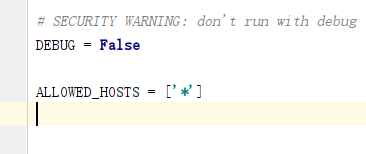 怎么将Django项目迁移到linux系统中Jun 01, 2023 pm 01:07 PM
怎么将Django项目迁移到linux系统中Jun 01, 2023 pm 01:07 PMDjango项目配置修改我们需要把原先的Django项目进行修改才能更好地进行项目迁移工作,首先需要修改的是settings.py文件。由于项目上线之后不能让用户看到后台的运行逻辑,所以我们要把DEBUG改成False,把ALLOWED_HOSTS写成‘*’,这样是为了允许从不同主机进行访问。由于linux中如果不加这句可能会出现文件找不到的情况,所以我们要把模板的路径进行拼接。由于做Django项目肯定进行过数据库的同步,所以我们要把migrations
 centos+nginx+uwsgi部署django项目上线的方法May 15, 2023 am 08:13 AM
centos+nginx+uwsgi部署django项目上线的方法May 15, 2023 am 08:13 AM我django项目叫yunwei,主要app是rabc和web,整个项目放/opt/下如下:[root@test-codeopt]#lsdjango_virtnginxredisredis-6.2.6yunwei[root@test-codeopt]#lsyunwei/manage.pyrbacstatictemplatesuwsgiwebyunwei[root@test-codeopt]#lsyunwei/uwsgi/cut_log.shloguwsgi.iniuwsgi.loguwsgi.p
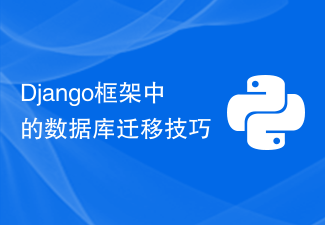 Django框架中的数据库迁移技巧Jun 17, 2023 pm 01:10 PM
Django框架中的数据库迁移技巧Jun 17, 2023 pm 01:10 PMDjango是一个使用Python语言编写的Web开发框架,其提供了许多方便的工具和模块来帮助开发人员快速地搭建网站和应用程序。其中最重要的一个特性就是数据库迁移功能,它可以帮助我们简单地管理数据库模式的变化。在本文中,我们将会介绍一些在Django中使用数据库迁移的技巧,包括如何开始一个新的数据库迁移、如何检测数据库迁移冲突、如何查看历史数据库迁移记录等等
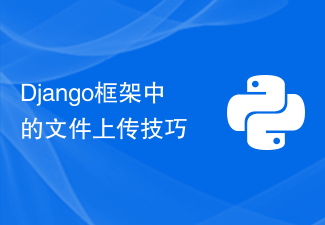 Django框架中的文件上传技巧Jun 18, 2023 am 08:24 AM
Django框架中的文件上传技巧Jun 18, 2023 am 08:24 AM近年来,Web应用程序逐渐流行,而其中许多应用程序都需要文件上传功能。在Django框架中,实现上传文件功能并不困难,但是在实际开发中,我们还需要处理上传的文件,其他操作包括更改文件名、限制文件大小等问题。本文将分享一些Django框架中的文件上传技巧。一、配置文件上传项在Django项目中,要配置文件上传需要在settings.py文件中进
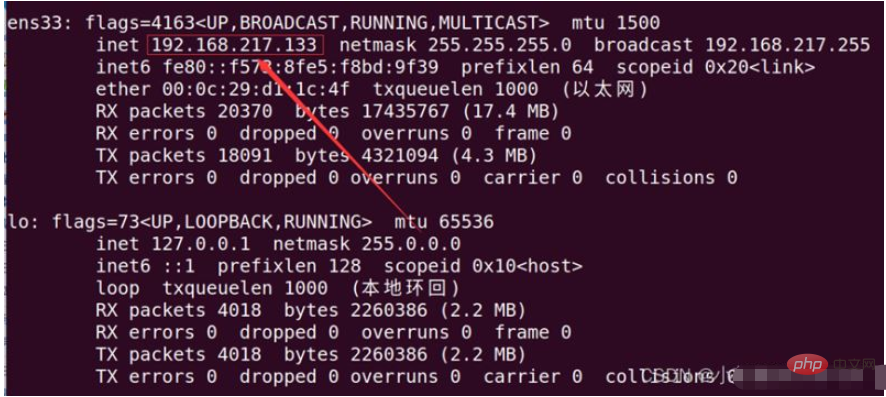 如何用nginx+uwsgi部署自己的django项目May 12, 2023 pm 10:10 PM
如何用nginx+uwsgi部署自己的django项目May 12, 2023 pm 10:10 PM第一步:换源输入命令换掉Ubuntu的下载源sudonano/etc/apt/sources.list将以下全部替换掉原文件,我这里用的是阿里的源,你也可以换其他的。debhttp://mirrors.aliyun.com/ubuntu/bionicmainrestricteddebhttp://mirrors.aliyun.com/ubuntu/bionic-updatesmainrestricteddebhttp://mirrors.aliyun.com/ubuntu/bionicunive
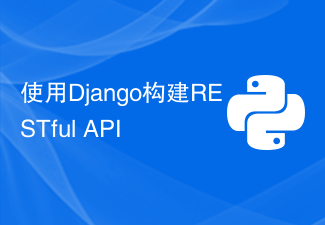 使用Django构建RESTful APIJun 17, 2023 pm 09:29 PM
使用Django构建RESTful APIJun 17, 2023 pm 09:29 PMDjango是一个Web框架,可以轻松地构建RESTfulAPI。RESTfulAPI是一种基于Web的架构,可以通过HTTP协议访问。在这篇文章中,我们将介绍如何使用Django来构建RESTfulAPI,包括如何使用DjangoREST框架来简化开发过程。安装Django首先,我们需要在本地安装Django。可以使用pip来安装Django,具体
 Django框架中的多数据库支持技巧Jun 18, 2023 am 10:52 AM
Django框架中的多数据库支持技巧Jun 18, 2023 am 10:52 AMDjango是一款流行的Pythonweb框架,其出色的ORM(对象关系映射)机制让开发者能够轻松操作数据库。但是在一些实际项目中,需要连接多个数据库,这时候就需要一些技巧来保证项目的稳定性和开发效率。在Django中,多数据库的支持是基于Django框架自身提供的功能而实现的。在这里,我们将介绍一些多数据库支持的技巧,以帮助你在Django的开发中更好地
 使用Python Django框架构建博客网站Jun 17, 2023 pm 03:37 PM
使用Python Django框架构建博客网站Jun 17, 2023 pm 03:37 PM随着互联网的普及,博客在信息传播和交流方面扮演着越来越重要的角色。在此背景下,越来越多的人开始构建自己的博客网站。本文将介绍如何使用PythonDjango框架来构建自己的博客网站。一、PythonDjango框架简介PythonDjango是一个免费的开源Web框架,可用于快速开发Web应用程序。该框架为开发人员提供了强大的工具,可帮助他们构建功能丰


Hot AI Tools

Undresser.AI Undress
AI-powered app for creating realistic nude photos

AI Clothes Remover
Online AI tool for removing clothes from photos.

Undress AI Tool
Undress images for free

Clothoff.io
AI clothes remover

AI Hentai Generator
Generate AI Hentai for free.

Hot Article

Hot Tools

VSCode Windows 64-bit Download
A free and powerful IDE editor launched by Microsoft

SublimeText3 Mac version
God-level code editing software (SublimeText3)

EditPlus Chinese cracked version
Small size, syntax highlighting, does not support code prompt function

MantisBT
Mantis is an easy-to-deploy web-based defect tracking tool designed to aid in product defect tracking. It requires PHP, MySQL and a web server. Check out our demo and hosting services.

mPDF
mPDF is a PHP library that can generate PDF files from UTF-8 encoded HTML. The original author, Ian Back, wrote mPDF to output PDF files "on the fly" from his website and handle different languages. It is slower than original scripts like HTML2FPDF and produces larger files when using Unicode fonts, but supports CSS styles etc. and has a lot of enhancements. Supports almost all languages, including RTL (Arabic and Hebrew) and CJK (Chinese, Japanese and Korean). Supports nested block-level elements (such as P, DIV),





